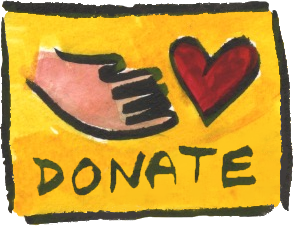Buttocks Organizing the Spine (Patrons)
Mostly front-lying. Exploring and integrating contractions of the buttocks with different movements and configurations of the axis (pelvis, spine, and head).
We offer over 50 free lessons, but this one's just for our Patron-level donors. You can learn about it in the free lesson notes and comments below, but to access the audio you’ll need to join The FP as a Patron. Learn more
Donor Tip: Skip this login next time! See Why & How to Stay Logged In (and why it's safe)
Got a question for Nick, or a thought about this lesson?
Use the comments section below! Public comments build our community and help search engines find us.




Thankyou for this and your other class on the buttocks which has made me feel stronger in walking. When lying on my stomach my heels naturally turn away from each other and the top of my feet and toes turn inwards. I find that clenching the buttocks seems to engage the arches of my feet which are inclined to cramp. Could you please suggest a class or another way of reducing the cramping of the feet?
The buttocks and the arches are definitely closely related. In the Related Lessons tab above you’ll find that Activating the Arches is a good lesson to explore this. Also try out Supple Ankles, Shifting Pelvis (32 minutes, Patrons). See the Related Lessons tabs in those lessons for more threads to follow. Length without Effort in our Getting Oriented collection may also be useful.
Thankyou so much Nick. Feldenkrais is truly miraculous and your teaching is wonderfully clear, kind and playful. I encourage everyone I know to explore the Feldenkrais Project.
This lesson and all the lessons on the pelvic clock/navigational pelvis have helped me to manage Level 1 Spondylolisthesis. I am grateful for your work, Nick.
This lesson was so organising for my system and left me with a lovely bouncy spring in my step, thank you!
I went into a really deep, deep state of relaxation after this session, in which the whole of my back was softened evenly into the earth.
I loved it.
Someone above mentioned cramp in the arches of the feet this is something I get a lot and I can feel permanent tension in my (high) arches. I did the suggested session Supple Ankles etc which was very helpful and then did this one straight after.
I am looking forward to discovering more about the relationship between the buttocks and the feet and intend to spend a couple of weeks or more just on this deep dive.
Thanks enormously for these sessions Nick, they have become a big part of my life over the last year.
Thank you! 1) In lifting my head I suddenly noticed that my shoulders were involved–totally unnecessarily. That is, when I relaxed them nothing changed about the movement! 2) In the very last variation, I first just tried to “do it”: very difficult, oh, I thought, impossible. Then I clenched my buttocks. oh! Not exactly easy, but definitely doable. I repeated it, with mild amazement. The word “attitude” applies here for me in an important way, although different from your use. I have been hearing about How Important The Buttocks Are, being the largest muscle in the body, etc. But mine have always been small and (no coincidence) essentially uninvolved in my daily spontaneous activity. Here I have experienced how useful they could be. Awesome. How to increase my spontaneous buttocks use? More Feldenkrais lessons such as these? Again, thanks!
Great! Yes, get very familiar with as many Feldenkrais buttocks-related lessons as you can (we’ve got at least three here at The FP). As you’re more aware, you can think sometimes about how they’re involved in everyday activities and exercises. Playfully engage them a little more and see what else they make easier!